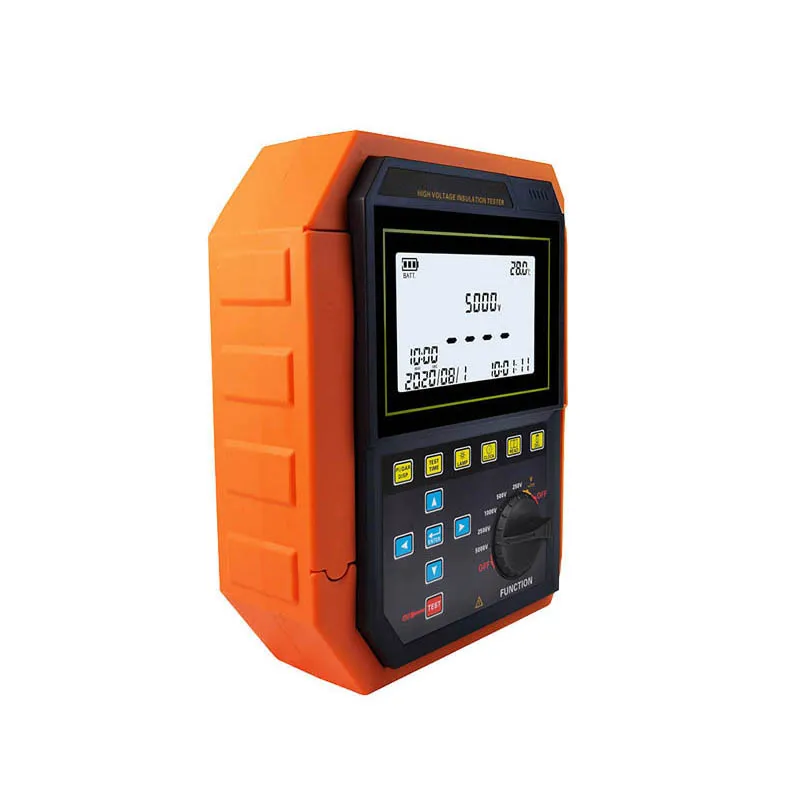 English
English


Evaluation of Capacitance and Tan Delta for Enhanced Material Performance in Electrical Applications
Understanding Capacitance and Tan Delta Measurement in Electrical Components
Capacitance and tan delta (tan δ) are crucial parameters in the evaluation of electrical components, especially capacitors, and insulators. These measurements provide insight into the performance and reliability of components in various applications, ranging from consumer electronics to industrial machinery. This article delves into the significance of these measurements, their methodologies, and their implications in the field of electrical engineering.
What is Capacitance?
Capacitance is a measure of a component's ability to store electrical charge. It is defined as the ratio of the electric charge (Q) stored on one plate of a capacitor to the voltage (V) across the plates, expressed in farads (F). The principle of capacitance is foundational in many electronic circuits, such as filters, oscillators, and energy storage systems.
Capacitors are widely used in electronic circuits not only for energy storage but also for timing applications, voltage regulation, and signal coupling. The capacitance value can vary significantly depending on the capacitor's design, materials, and environment. Therefore, accurate measurement of capacitance is essential for the design and troubleshooting of electronic systems.
What is Tan Delta?
Tan delta, often referred to as loss tangent, is a measure of the energy loss in a dielectric material when subjected to an alternating electric field. It is defined as the ratio of the resistive (loss) component of the current to the reactive (storage) component of the current, represented mathematically as
\[ \tan \delta = \frac{I_{\text{loss}}}{I_{\text{reactive}}} \]
where \( I_{\text{loss}} \) is the current that dissipates energy in the form of heat, and \( I_{\text{reactive}} \) is the current that stores energy in the electric field. The tan delta value ranges from 0 to 1, with lower values indicating higher efficiency and better dielectric properties.
capacitance and tan delta measurement

Measurement Techniques
Capacitance and tan delta are typically measured using specialized instrumentation, including LCR meters and dielectric analyzers. These devices apply an alternating current (AC) signal to the capacitor or dielectric material and measure the resulting current and voltage.
1. Capacitance Measurement An LCR meter measures capacitance at specific frequencies, with values usually quoted at standard testing frequencies (like 1 kHz or 1 MHz). Variations in capacitance can indicate issues such as aging, dielectric breakdown, or manufacturing defects.
2. Tan Delta Measurement To measure tan delta, the instrument applies an AC voltage and calculates the phase difference between the voltage and current waveforms. The loss angle, associated with tan delta, directly correlates with the dielectric losses occurring in the material. Elevated tan delta values often signify degradation or excessive heat generation, which can compromise the integrity of a component over time.
Importance in Practical Applications
The relationship between capacitance and tan delta measurements is vital for assessing the condition and reliability of electrical components. For instance, in high-voltage insulation systems, monitoring tan delta can provide early indications of insulation breakdown. Regular measurements can help predict failures, preventing costly downtime and unscheduled repairs.
Moreover, engineers use these measurements during the design phase to select suitable materials, determine appropriate component ratings, and ensure compliance with industry standards. Understanding both capacitance and tan delta helps engineers to optimize the performance of electrical systems for intended applications.
Conclusion
Capacitance and tan delta measurements are essential tools in the electrical engineering toolkit. By accurately assessing these parameters, engineers can make informed decisions about material selections, design integrity, and predictive maintenance strategies. As technology advances, the importance of these measurements will continue to grow, ensuring the reliability and efficiency of electrical and electronic systems in our rapidly evolving world.
-
Differences between open cup flash point tester and closed cup flash point testerNewsOct.31,2024
-
The Reliable Load Tap ChangerNewsOct.23,2024
-
The Essential Guide to Hipot TestersNewsOct.23,2024
-
The Digital Insulation TesterNewsOct.23,2024
-
The Best Earth Loop Impedance Tester for SaleNewsOct.23,2024
-
Tan Delta Tester--The Essential Tool for Electrical Insulation TestingNewsOct.23,2024





